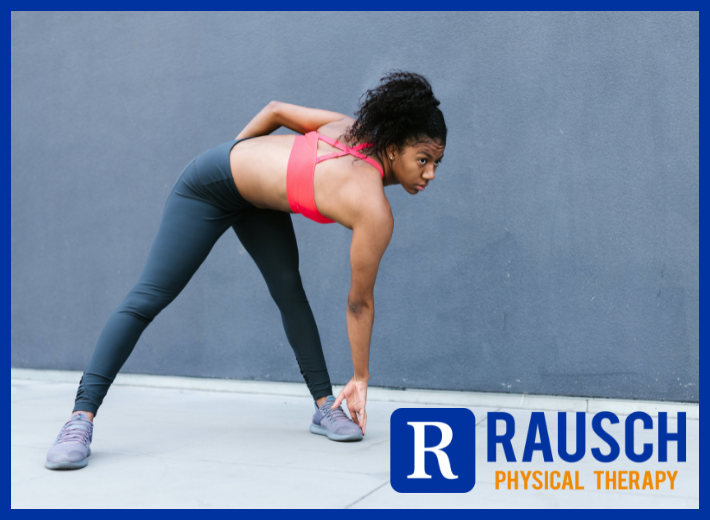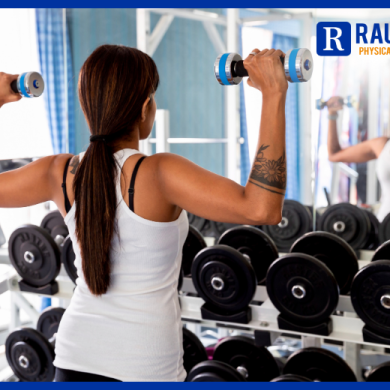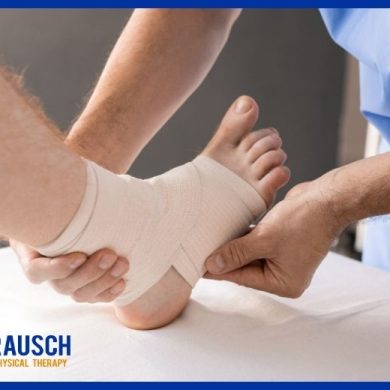At Rausch Physical Therapy and Wellness, we believe that movement is medicine—at every age and every stage of life. That’s why we’re excited to announce our new partnership with Fort Fitness,
5 Warm-Up Mistakes That Can Ruin Your Workout and Leave You Injured
October 2, 2021 2:27 pm / Category: Physical Therapy

Injuries can happen for many different reasons, but a common one is related to skipping your warm-up before exercising. Not properly preparing for a workout can lead to creaky joints and achy muscles – or worse. Before hitting the weights or heading out for a long run, start with a good warm-up. Here are some tips for warming up the right way and to avoid injuries.
Warm-ups and cool downs are essential to your workouts. Done correctly, warming up may help reduce the risk of injury and improve your athletic performance and results, according to the American Heart Association.
Even though it only takes a few extra minutes, it’s easy to fall into the habit of skipping this essential step before your workout. So before your next sweat session, try a three- to 10-minute warm-up (depending on the length and intensity of your main workout) that includes light cardio to increase your heart rate and dynamic stretches that get your muscles ready to move.
Keep these five tips in mind, and you’ll give your body the best chance to stay healthy and free of injury.
1. Skipping Your Warm-Up Entirely
Avoiding a warm-up may be tempting, especially if you’re pressed for time, but it can do more harm than good.
“The main purpose of the warm-up is to raise the body temperature via increases in your heart rate and blood pressure and loosen tissues to perform work, as well as release hormones associated with exercise,” says Geoff Tripp, CSCS, head of fitness science at Trainiac.
With that in mind, Tripp says the warm-up should closely mimic the types of movements and intensities that you’ll be performing during your workout to prepare the body and brain for what’s to come.
“A short warm-up is better than nothing, but it should be specific, with some intensity to prepare your body for work,” he says.
2. Starting Off With Too Much Intensity
Slow and steady wins the race! A solid warm-up should mimic what you plan on doing in your workout but at a much lighter and gentler pace. Think of it as your workout in slow motion or at a lower intensity.
“We call this style of warm-up dynamic,” says Kelsey Decker, certified personal trainer and Education Coordinator for Stretch Lab. “You are preparing your body for an activity with movement that mimics what you will do in your workout or fitness activity but not at full capacity.”
When you do dynamic movements prior to a workout, Decker says you’re increasing oxygen consumption, blood flow and body temperature before diving straight into full activity.
“When the body is not properly warmed up, you have a higher chance of an injury happening, Decker says.” But if you spend time performing a good warm-up, your body will be ready for more intense activity, according to the American Academy of Orthopedic Surgeons.
3. Doing Static Stretches First
Stretching is vital to your fitness, but only when it’s the right kind of stretching. Decker says there’s a lot of misinformation about stretching and flexibility training, and most of it stems from confusion around the idea of stretching before exercise.
Static stretching (holding a stretch for 30 seconds or more) improves flexibility, increases range of motion and can help increase blood flow and oxygen distribution throughout the body, but it isn’t recommended for warm-ups, Decker says.
In fact, it might even hinder your workout performance. An April 2013 review published in the Scandinavian Journal of Medicine & Science in Sports found that static stretches can reduce muscle strength by nearly 5.5 percent (or more when a stretch is held longer!), cut muscle power by 2 percent and reduce power by nearly 3 percent.
4. Not Warming Up Long Enough
Most of us have been guilty of it at some point: Two minutes on the treadmill, and we’re done with our warm-up!
But the National Strength and Conditioning Association says that an effective warm-up should last between five and 10 minutes and consist of low-to-moderate intensity cardiorespiratory exercise, followed by less intense movements similar to the sport or activity about to be performed.
More specifically, Tripp says that the length of your warm-up is usually determined by a few factors such as the duration and intensity of the activity.
“We usually see that as exercise length increases, intensity lowers, so a less intense warm-up is needed. But as exercise length decreases, and intensity increases, a longer warm-up is beneficial,” he says.
5. Performing the Same Warm-Up for Every Workout
You generally wouldn’t do the exact same workout each day, and Tripp says we should approach the warm-up in a similar fashion. “A warm-up specific to your activity will better prepare your body for the work you need to perform,” he says.
Tripp looks at a warm-up as a very condensed version of the workout, since it prepares the mind and body for what is to come. An easy way to think about this, says Tripp, is that your warm-up is key for optimal performance, injury prevention and reductions in muscle soreness post-exercise.
Push your limits and elevate your performance with a customized physical therapy program. Let us help you perfect your form and increase performance. Contact our experts today at (949) 276-5401 and join our Facebook community here. Remember, we also offer Rx Massage to enhance your PT treatments — and also to help when you get sore and to increase recovery from hearty exercise or race events.
Reference: [https://www.livestrong.com/article/13728066-warm-up-mistakes/]






